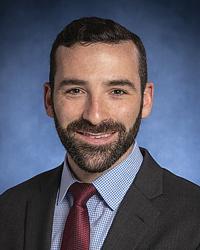Research Lab Results
-
Pediatric Cerebral Palsy and Epilepsy Lab
The team headed by Shenandoah “Dody” Robinson, M.D., professor of neurosurgery, neurology and pediatrics, studies perinatal brain injury and repair. Employing developmentally age-appropriate models, the lab investigates neurological consequences of extremely preterm birth, including cerebral palsy, chronic pain, cognitive and behavioral impairment, epilepsy and posthemorrhagic hydrocephalus of prematurity. -
Bradford Winters Lab
The Bradford Winters Lab conducts research on patient safety and quality of care. Our team focuses on the topics of patient care in the intensive care unit, evidence-based medicine, quality health care, and the measurement and evaluation of safety efforts. Currently our work involves evaluating pain management techniques in post-craniotomy patients, developing guidelines for policy development of patient safety initiatives and creating measures for rapid-response system outcomes.
Principal Investigator
Department
-
Borahay Lab: Gynecologic and Fibroids Research
Dr. Borahay's lab focuses on understanding pathobiology, developing novel treatments, and carrying out high quality clinical trials for common gynecologic problems with a special focus on uterine fibroids. Our lab also investigates the causes and novel treatments for menstrual disorders such as heavy and irregular periods. In addition, Dr. Borahay’s team explores innovative approaches to minimally invasive gynecologic surgery, focusing on outpatient procedures with less pain and faster recovery times. -
Kata Design Studio
We started Kata to bridge the gap between professional experiential production and neuroscience, clinical neurology, and medical hardware. We strive to build experiences and technology from the ground up, with a focus on mission, and at a level that is consistent with the best productions in the industry. We mirror the thousands of hours that go into a level design in a video game, but with the crucial difference that the focus is on the subtleties required for patient treatment or wellness. Our designs require high-frequency iterative development with patients and users in countless game-play sessions in which they provide crucial feedback. Characters have been painstakingly crafted to elicit profound emotional responses. Some of the requirements for patients or the elderly population in this space are qualitatively different from what is needed in the entertainment marketplace. That said we have also understood the critical artistic similarities. The core ethos of Kata is that the challenge of complex movement has profound benefits for cognition, wellness, and brain repair. Specifically, there is growing evidence that complex motor movement can have cognitive benefits that go beyond what has been reported for exercise alone. When designing experiences to treat motor impairments after stroke, maximizing rigorous and dynamic motor input is a requirement. New interactive technologies will allow people to engage in diverse and complex motor movements, even in the home, which was previously impossible. Overall it has been a very exciting journey, combining art, medicine, technology, and neuroscience. We continue to build, discover, and craft immersive experiences, side by side with physicians, physical therapists, and scientists, with the common goal of pushing clinical care and wellness forward. We believe this is only possible by having a mission focused design group embedded in an academic hospital. Ultimately, we wish to scale and perfect these innovations into other hospitals. Kata is a true hybrid of academia, and industry, doing what neither can do in isolation. We hope the ethos and design philosophy behind Kata provides the impetus for its expansion, partnerships, and growth. -
Machine Biointerface Lab
Dr. Fridman's research group invents and develops bioelectronics for Neuroengineering and Medical Instrumentation applications. We develop innovative medical technology and we also conduct the necessary biological studies to understand how the technology could be effective and safe for people. Our lab is currently focused on developing the ""Safe Direct Current Stimulation"" technology, or SDCS. Unlike the currently available commercial neural prosthetic devices, such as cochlear implants, pacemakers, or Parkinson's deep brain stimulators that can only excite neurons, SDCS can excite, inhibit, and even sensitize them to input. This new technology opens a door to a wide range of applications that we are currently exploring along with device development: e.g. peripheral nerve stimulation for suppressing neuropathic pain, vestibular nerve stimulation to correct balance disorders, vagal nerve stimulation to suppress an asthma attack, and a host of other neuroprosthetic applications. Medical Instrumentation MouthLab is a ""tricorder"" device that we invented here in the Machine Biointerface Lab. The device currently obtains all vital signs within 60s: Pulse rate, breathing rate, temperature, blood pressure, blood oxygen saturation, electrocardiogram, and FEV1 (lung function) measurement. Because the device is in the mouth, it has access to saliva and to breath and we are focused now on expanding its capability to obtaining measures of dehydration and biomarkers that could be indicative of a wide range of internal disorders ranging from stress to kidney failure and even lung cancer. -
Spinal Oncology Lab
The bony skeleton is one of the most common sites of metastatic spread of cancer and a significant source of morbidity in cancer patients, causing pain and pathological fracture, impaired ambulatory ability and poorer quality of life.
In our continuous investigation of the mechanism of metastasis in spine tumors and of developing animal models and treatments, our team seeks to understand how cancer cells metastasize to the bony spine.
Our laboratory develops novel techniques to evaluate our animal models of metastatic spine disease. -
The Spinal Fusion Laboratory
Five to 35 percent of spine fusionprocedures fail, even when using the gold standard treatment of grafting bone from the patient's own iliac crest. Fusion failure, otherwise known as pseudoarthrosis, is a major cause of failed back surgery syndrome (FBSS) and results in significant pain and disability, increasing the need for additional procedures and driving up health care costs. The ultimate goal of the Spinal Fusion Laboratory is to eliminate pseudoarthrosis by using animal models to study various strategies for improving spinal fusion outcomes, including delivery of various growth factors and biological agents; stem cell therapies and tissue engineering approaches.





